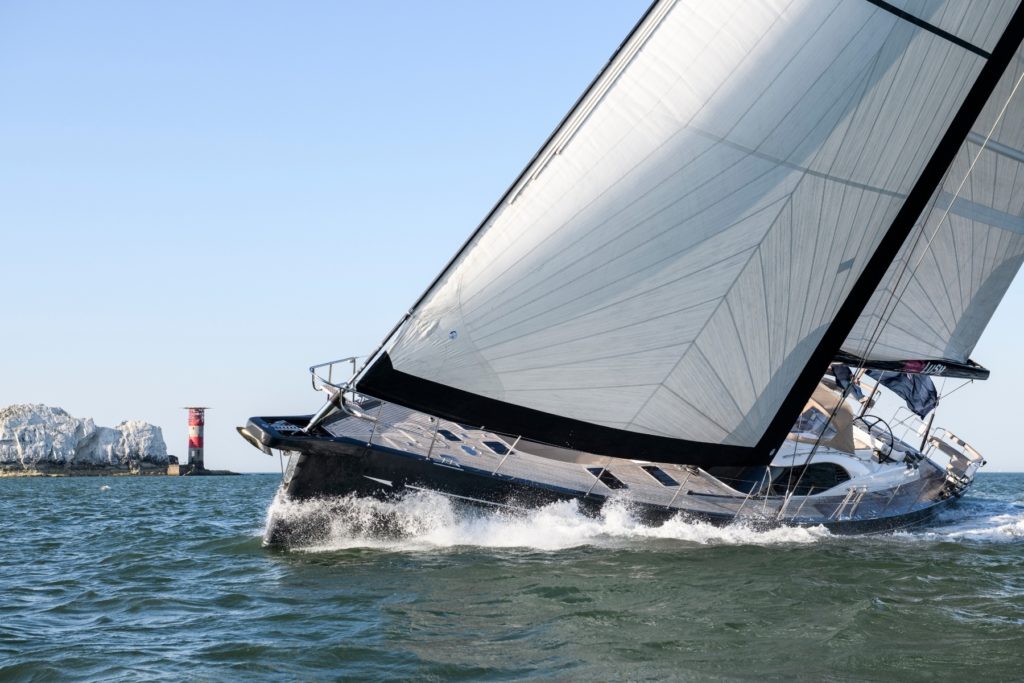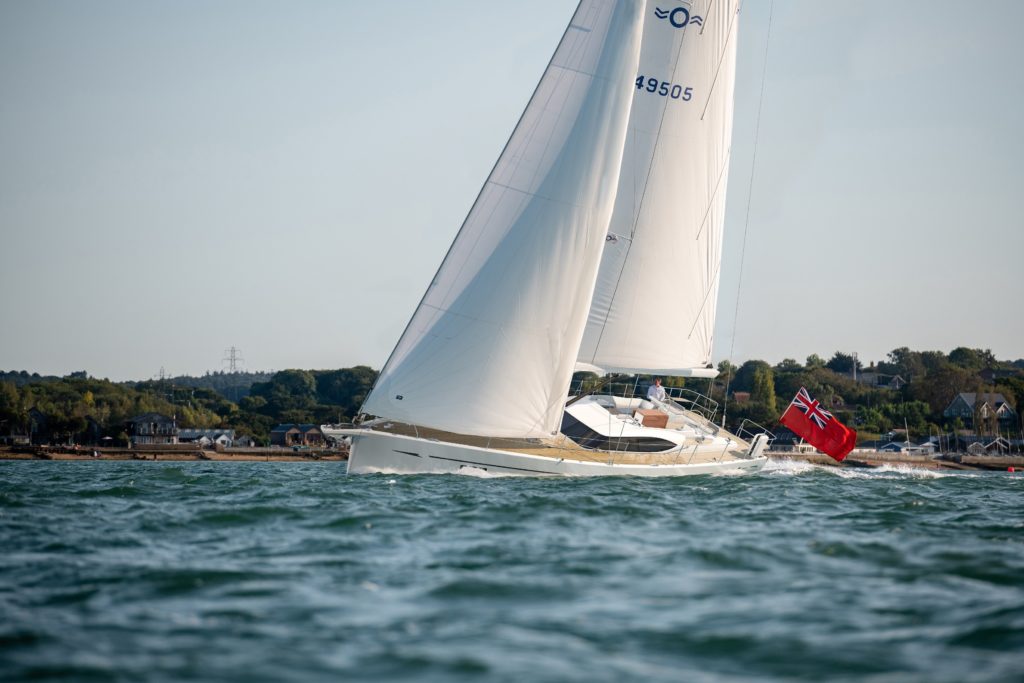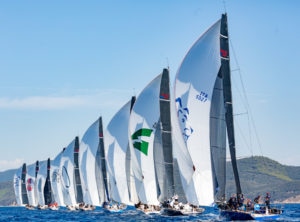Exploring Oyster: how the company charted its way back to profit

Since its inception, MIN has sent out two news flashes. One was when SIBS and the Ocean Village Boat Show were cancelled hours before opening, the other was when Oyster Marine went into liquidation.
Just a few months later, with a marine industry still reeling from the after-effects and a redundant workforce, the company was bought by Richard Hadida. Accompanying him to unlock the doors on day one, was Becky Bridgen – now chief financial officer and deputy CEO.
Oyster‘s latest financial reports are a story in themselves. The company’s back into profit in the last quarter with an extremely positive forecast for sustained profits. The story of rebirth and success now sees Oyster actively recruiting for an impressive 25 apprentices to start ASAP. But it hasn’t been straightforward getting there.
“Our immediate challenge was the 15 half-built boats that needed to be completed,” Bridgen says of 2018. “We had no workforce, just a handful of people to keep the power going. And, the moulding company used by Oyster Marine had also gone into administration, so we were faced with a business with no ability to mould hulls.”
But, undaunted, the Oyster team issued new contracts and started to rebuild the workforce to finish the boats already under construction. While this was ongoing, Oyster also needed to put any questions about the structural components to bed, and as such invested in significant management of quality standards and getting the all-important Lloyds certification to provide reassurance.
Around 450 people were made redundant by Oyster Marine. Bridgen says the vast majority were pulled back in initially to complete the boats in the bays.
“The staff were very shaken,” she says. “None of them had any inkling that the business was in trouble. It came as a huge shock to them. It has taken time to build team confidence especially with empty bays when they started back.”
That team now includes laminators and a composite team, which was created as moulding was brought in-house, another 40 plus people.
“We still need to offer reassurance that we’re hiring to retain,” she says. “There’s still nervousness, especially with Covid creating uncertainty. I get people on the shop-floor asking me what the 10-year strategy is for Oyster. Our workforce is really passionate.”
Bridgen estimates that approximately 60% of the workforce are ex-Oyster Marine.
“We have over 400 staff now, in a year’s time it will be over 500,” she says.
That growth in numbers is testament to the current strong order book.

“Models are being sold into mainly UK at the moment,” says Bridgen, “but an uptick is being seen from the US in the last few months. The tax incentives to buy used boats came to an end. We’ve seen definite interest in the 495, it’s the smaller end of our range which is reflective in terms of US boaters access requirements to harbours.”
Bridgen also believes Oyster’s orders, like many boatbuilders, are benefiting from the pandemic.
“Covid has shifted people’s attitudes,” she says. “People want to be more active outdoors – that’s going to lead the shift between sail and motorboats. People want to do something exciting again. We’re well positioned to realise that.”
But it took six months before Oyster got a new order for a yacht.
“Signing the first contract was really moving,” says Bridgen, “as was the hand-over of first new built boat.”
None of that would have been possible without rebuilding the workforce.
“When we arrived, there was a hooter sounded for start and the end of the work day,” Bridgen says. “It was very poignant with no staff there.”
The hooter was one of the first things to go and since then, aided in part by the Covid-dynamic which has upended all businesses’ working routines, Oyster is practising flexibility to break its manufacturing mould.
“For a production business we’re looking hard at how we have flexibility in our process,” says Bridgen. “Covid has helped. We have gone to staggered start times across the crew – which now helps with, for example, work life balance like childcare.
“People can start at 6, 7 or 8 or whatever’s agreed. We’re keeping that in place.
“Flexible working is also offered for staff who’ve been with Oyster for a long time,” says Bridgen, “like working three days a week.”
Now the company is looking to recruit 25 apprentices to start this year, on top of the 17 it already has in place.
“I joined Oyster to build skills for young people,” says Bridgen. “We have got a national marine industry with an ageing workforce. We will lose skills if we don’t do something about it. We need to build skills and leaders for the future and develop apprentices to be the managers of tomorrow – to see there’s a long term career in the marine trade.”
To help with this, the company has created the Oyster Yacht Apprenticeship Academy with strong links to colleges in Southampton and Wroxham (its manufacturing bases) and designed training materials to fulfil the schemes. As well as the true craftsmanship, the training includes softer skills to work on across the period of the apprenticeship, e.g., time management, planning, and interpersonal skills (like giving and receiving feedback).
The apprenticeships are taken seriously. Bridgen says that current staff nearing retirement age – or ex-staff who have retired – are being utilised as mentors to apprentices in specific craft areas to make sure the improvement is continuous and that the younger team isn’t left to flounder.
“We’ve got to work on it, otherwise apprentices will do three or four years of training and leave. We want them to feel they can grow and develop and stay here as a result,” she says.
“British manufacturing is difficult. We’ve built a nation of call centre operatives. People are good with their hands, that heritage is being lost, we want to ensure legacy remains.”












very encouraging article and ethos for the future of the marine industry as well as staff
going bust and not paying suppliers probably helped!
Well done Becks and all at Oyster 🙏👍